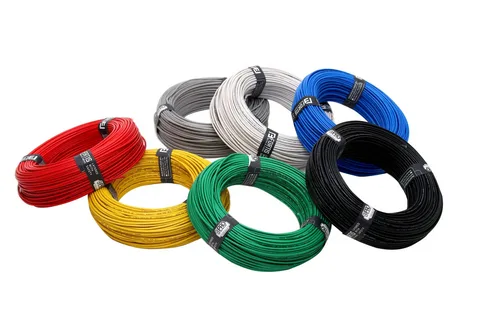Cables are the lifeblood of our modern technology, connecting our devices and allowing us to access the internet, power our gadgets, and transmit data. However, cables can also be the source of much frustration when they malfunction or cause problems.
Common Cable Problems
Common cable problems can range from minor inconveniences to major safety hazards. Here are some of the most common cable problems and how to troubleshoot them:
1. Frayed or Damaged Cables
Frayed or damaged cables are a common source of electrical shorts, fires, and data loss. Inspect your cables regularly for signs of damage, such as cuts, cracks, or exposed wires. If you find any damaged cables, replace them immediately.
2. Loose or Disconnected Cables
Loose or disconnected cables can cause intermittent connectivity problems, slow data transfer speeds, and even complete device failure. Make sure that all of your cables are securely plugged into both devices. If a cable is loose, try reseating it. If the connector is damaged, you may need to replace the cable.
3. Interference
Cables can pick up interference from other electronic devices, which can cause problems with audio and video signals. Interference can also be caused by electromagnetic fields (EMFs) from power cable and other sources. To reduce interference, try moving power cable away from other electronic devices. You may also want to use a shielded cable.
4. Incorrect Cable Type
Using the wrong cable type for a particular device or application can cause problems with connectivity, performance, and even safety problems. Ensure you are using the correct cable type for your device and application.
5. Slow Data Transfer Speeds
Slow data transfer speeds can be caused by various factors, including the cable’s quality, the cable’s length, and the type of connection. If you are experiencing slow data transfer speeds, try using a shorter cable, a higher-quality cable, or a different kind of connection (e.g., switching from USB 2.0 to USB 3.0).
6. Intermittent Connectivity Problems
Various factors, including loose connections, damaged cables, and interference, can cause intermittent connectivity problems. Try reseating the lines, replacing damaged cables, and moving the cables away from other electronic devices.
7. No Connectivity
If you are not able to connect two devices using a cable, there are a few things you can check:
- Make sure that the cable is securely plugged into both devices.
- Try a different cable.
- Try connecting the devices using another method (e.g., wireless).
- If you are using a network cable, ensure the network is working properly.
Troubleshooting Common Cable Problems
If you are experiencing cable problems, there are a few things you can do to troubleshoot the issue:
- Inspect the cable for damage: Look for any frayed or damaged wires and any kinks or bends in the cable.
- Check the connections: Ensure the cable is securely plugged into both devices. You may need to replace the cable if the connector is loose or damaged.
- Eliminate interference: Try moving the cable away from other electronic devices. Use a shielded line to reduce interference.
- Use the correct cable type: Use the right cable for your device and application.
Preventing Cable Problems
There are a few things you can do to prevent cable problems:
- Handle cables carefully: Avoid bending, twisting, or pulling on ropes.
- Secure cables properly: Use cable ties, clips, or other fasteners to secure cables in place.
- Avoid extreme temperatures: Do not expose cable to extreme heat or cold.
- Use surge protectors: Surge protectors can help to protect your lines from damage caused by power surges.
Common Cable Problems and Their Solutions
Here is a table of common cable problems and their solutions:

If you still have cable problems, you may need to contact a professional for assistance.
Additional Tips
- Keeping cables organized will help prevent them from getting tangled and damaged.
- Label your cables: This will make identifying and troubleshooting problems easier.
- Use high-quality cables: High-quality wires are less likely to fray or damage, providing better performance.
- Replace cables regularly: Cable should be replaced every few years, even if they appear in good condition.
Conclusion
Cables, the unsung heroes of our technological world, play a crucial role in connecting devices, transmitting data, and powering our gadgets. By understanding common cable problems, implementing preventive measures, and seeking professional assistance when necessary, we can ensure the smooth operation of our electronic devices and maintain a reliable connection to the digital realm. Remember, a well-maintained cable is a happy cable.

